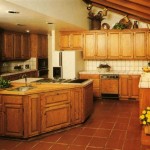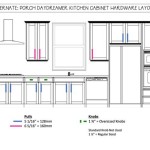Used Kitchen Cabinets in Minnesota: A Resourceful Option
Kitchen renovations represent a significant investment for homeowners. The cost of new cabinets can quickly escalate, prompting many individuals to explore more budget-friendly alternatives. Used kitchen cabinets present a viable option, offering substantial savings while potentially fulfilling aesthetic and functional needs. In Minnesota, a market exists for both buying and selling used kitchen cabinets, driven by factors such as affordability, sustainability, and the desire for unique or vintage styles.
The decision to purchase used kitchen cabinets requires careful consideration. Factors such as cabinet condition, style compatibility, and potential modifications should be thoroughly evaluated. While the financial benefits are often attractive, a thorough assessment of suitability ensures that the chosen cabinets will effectively integrate into the existing kitchen space and meet long-term requirements. This article will discuss the advantages, disadvantages, and the process involved in sourcing used kitchen cabinets within Minnesota.
Advantages of Choosing Used Kitchen Cabinets
The primary driver behind the popularity of used kitchen cabinets is cost. Compared to purchasing new cabinets, used options can represent a significant reduction in expenses, often ranging from 30% to 70% less. This cost-effectiveness allows homeowners to allocate resources to other aspects of the renovation, such as countertops, appliances, or flooring. The savings are particularly pronounced with high-end or custom-built cabinets, where the initial cost can be substantial.
Beyond financial benefits, selecting used cabinets contributes to environmentally sustainable practices. By reusing existing materials, the demand for new resources is reduced, minimizing the environmental impact associated with manufacturing and transportation. This aligns with the growing trend towards conscious consumption and contributes to a more circular economy. Reusing cabinets diverts them from landfills, reducing waste and promoting resource conservation. Furthermore, some homeowners may find vintage or antique cabinets that are no longer in production, offering a unique aesthetic that cannot be replicated with new cabinetry. This allows for the creation of a personalized and distinctive kitchen design.
Used cabinets often come fully assembled, which can save on installation costs and time. The complex assembly process is already completed, reducing the labor required for installation. This can be particularly valuable for DIY enthusiasts who prefer to handle the installation themselves. However, professional installation is still recommended for complex layouts or when modifications are required to ensure proper fit and functionality.
Potential Disadvantages and Considerations
While the advantages of used kitchen cabinets are compelling, potential drawbacks must be acknowledged. The condition of the cabinets is paramount. Thorough inspection is necessary to identify any damage, such as water damage, warping, or structural weaknesses. Minor imperfections may be acceptable, but significant damage can compromise the integrity and longevity of the cabinets. Repairing or refinishing damaged cabinets can add to the overall cost, potentially diminishing the initial savings.
Matching existing kitchen styles and dimensions can present a challenge. Used cabinets may not perfectly align with the current layout, requiring modifications or creative design solutions to achieve a cohesive look. Compatibility with existing appliances and plumbing fixtures must also be considered. The availability of specific sizes and configurations can be limited, potentially requiring a compromise on desired kitchen design. Professional consultation may be necessary to assess the feasibility of integrating used cabinets into the existing space.
Warranty coverage is typically absent with used kitchen cabinets. Unlike new cabinets, which often come with manufacturer warranties, used options are sold "as is." This means that any repairs or replacements needed after purchase are the buyer's responsibility. This lack of warranty coverage introduces a degree of risk, highlighting the importance of thorough inspection and careful evaluation before making a purchase. It is advisable to factor in a contingency budget for potential repairs or replacements.
Sourcing Used Kitchen Cabinets in Minnesota
Several avenues exist for sourcing used kitchen cabinets within Minnesota. Online marketplaces, such as Craigslist, Facebook Marketplace, and eBay, offer a wide range of options from individual sellers and businesses. These platforms allow for convenient browsing and comparison of prices and styles. However, it is essential to exercise caution when dealing with online sellers, verifying their legitimacy and inspecting the cabinets in person before committing to a purchase. Local resale shops and architectural salvage yards often carry used kitchen cabinets. These businesses specialize in reselling repurposed or salvaged materials, offering a curated selection of unique and vintage items. Visiting these establishments allows for direct inspection of the cabinets and personalized assistance from knowledgeable staff.
Another potential source is kitchen remodeling companies. As companies remove existing cabinets during renovation projects, they often sell them at discounted prices. Contacting local remodeling companies and inquiring about their inventory of used cabinets can be a worthwhile strategy. This approach may offer access to higher-quality cabinets removed from luxury homes. Attending estate sales and auctions can occasionally yield opportunities to acquire used kitchen cabinets. These events often feature items from entire households, including kitchen cabinetry. Patience and persistence are required, as the availability of cabinets can be unpredictable. However, estate sales and auctions can offer the chance to find unique or antique cabinets at competitive prices.
Regardless of the sourcing method, thorough inspection is crucial. Examine the cabinets for signs of water damage, warping, cracks, or excessive wear and tear. Pay close attention to the hinges, drawer slides, and door frames, ensuring they are in good working order. Open and close all doors and drawers to assess their functionality. If possible, inquire about the age and history of the cabinets to gain a better understanding of their condition and potential longevity. It is generally advisable to bring a measuring tape and camera to accurately document the dimensions and details of the cabinets. This will facilitate the comparison with existing kitchen dimensions and ensure compatibility with the desired design.
Prior to purchasing used kitchen cabinets, meticulous planning is essential. Accurately measure the kitchen space and create a detailed layout that incorporates the used cabinets. Consider the placement of appliances, plumbing fixtures, and electrical outlets. Assess whether any modifications will be required to accommodate the used cabinets, such as cutting, trimming, or adding filler panels. It is often beneficial to create a scaled drawing of the kitchen layout to visualize the arrangement of the used cabinets. This will help identify any potential challenges and ensure a seamless integration. If modifications are required, it is advisable to consult with a professional carpenter or contractor to ensure the work is performed correctly and safely. Improper modifications can compromise the integrity and functionality of the cabinets.
Transportation is a crucial aspect of acquiring used kitchen cabinets. The size and weight of the cabinets can make transportation challenging, particularly for larger sets. Consider the transportation method and ensure that adequate manpower and equipment are available to safely move the cabinets. Renting a truck or van may be necessary. Protect the cabinets from damage during transportation by wrapping them in blankets or padding. Secure the cabinets in the vehicle to prevent them from shifting or falling. Plan the transportation route in advance, considering any potential obstacles, such as narrow roads or low bridges. If professional installation is planned, coordinate transportation with the installer to ensure a smooth and efficient process.
The installation process for used kitchen cabinets closely mirrors that of new cabinets. However, some additional considerations may be necessary due to the used nature of the cabinets. Ensure that the wall surfaces are level and plumb before installing the cabinets. Uneven walls can cause cabinets to appear misaligned. Shimming may be required to compensate for any irregularities in the wall surfaces. Carefully attach the cabinets to the wall studs using screws or bolts. Ensure that the cabinets are securely fastened and can withstand the weight of the contents. Align the doors and drawers properly, making any necessary adjustments to the hinges or slides. Install the countertops and backsplashes, ensuring a seamless and watertight seal. Connect the plumbing fixtures and electrical outlets, following all applicable safety codes. A professional installer can provide expert guidance and ensure that the installation is performed correctly and safely.
Cleaning and refinishing used kitchen cabinets can significantly enhance their appearance and extend their lifespan. Thoroughly clean the cabinets with a mild detergent and water to remove any dirt, grease, or grime. Repair any minor damage, such as scratches or dents, using wood filler or patching compound. Sand the cabinets to create a smooth surface for painting or staining. Apply a primer to improve adhesion and provide a uniform base coat. Paint or stain the cabinets according to the desired color and finish. Apply a sealant to protect the finish from moisture and wear. Replacing the hardware, such as knobs and pulls, can further enhance the aesthetic appeal of the cabinets. Vintage or antique hardware can complement the style of older cabinets.
The decision to purchase used kitchen cabinets in Minnesota involves careful evaluation and planning. While offering significant cost savings and environmental benefits, potential drawbacks such as condition, style compatibility, and the absence of warranty coverage must be addressed. Thorough inspection, meticulous planning, and professional assistance can mitigate these risks and ensure a successful kitchen renovation. By carefully considering the advantages and disadvantages, homeowners can make an informed decision and potentially transform their kitchen space without exceeding their budget.

How To Buy Used Kitchen Cabinets A Complete Guide Shelfgenie

Kitchen Cabinets And Remodeling Duluth Mn

Used Cabinets Save Big On Your Kitchen Remodel

How To Buy Used Kitchen Cabinets A Complete Guide Shelfgenie

Tips Tricks When New Or Used Kitchen Cabinets

At The Cabinet Culina Design Keeping Your In Midwest Is A Big Deal And

Why Donate Or Buy Cabinets At The Re

Dream Home Tour A Beautiful French Country Estate In Minnesota Kitchen Designs Kitchens

Unique Amish Kitchen Archives Buy Custom Furniture For In Coates Mn Showroom

30 Farmhouse Kitchen Ideas Rustic Kitchens
Related Posts








